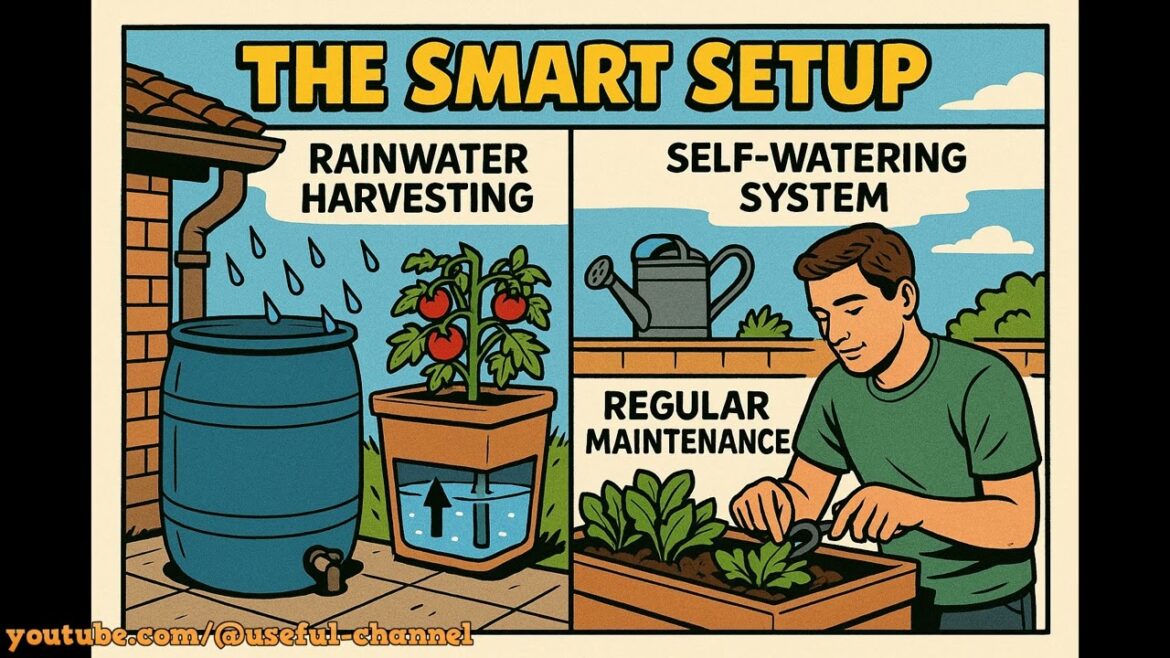Discover how to start a thriving vegetable garden anywhere — balcony, rooftop, or small backyard. Learn space-saving layouts, best crops, low-tech hacks, and seasonal planning secrets to grow fresh food at home. Perfect for beginners and urban gardeners!
#UrbanGardening, #GrowYourOwnFood, #ContainerGardening
_____
Urban Gardening 2025. How to grow a thriving vegetable garden anywhere. In 2025, the urban gardening trend has transformed from a niche hobby into a lifestyle embraced by millions. As climate change and food insecurity push more people towards self-reliance, the humble vegetable garden has become a powerful tool for sustainability and wellness. Whether you live in a tiny apartment or have a modest backyard, creating a productive vegetable garden is more accessible than ever. This guide breaks down the modern essentials for turning any space into a lush food producing zone. All achievable without live video and ideal for captivating podcast listeners and poster visuals. The smart setup, containers, layouts, and light. Modern gardening starts with maximizing limited space. In 2025, vertical gardening systems are mainstream with stackable planters, trelluses, and wall-mounted grow bags taken over balconies and patios. Urban gardeners swear by modular container systems with built-in irrigation, ideal for customizing layouts on rooftops where fire escapes. Raised beds, still relevant and wildly popular, are made of sustainable materials like recycled plastic lumber and biomposits, offering durability and eco-friendliness. Natural sunlight remains crucial, so assessing your environment is key. A simple sunlight tracker app helps determine where to place your containers for maximum exposure, usually south facing spots. With LED grow lights becoming ultra efficient, supplementing natural light indoors is easier and more cost effective than ever. A single LED panel can support leafy greens like spinach, arugula, and herbs year round, even in dim apartments. Top crops for small spaces and high yields. The best crops for limited rubbing spaces in 2025 are fast growing, compact, and high in nutritional value. Micro greens continue to dominate, offering a harvest in just 7 to 10 days. They’re perfect for small trays on window sills or countertop gardens. Popular varieties include radish, mustard, basil, and broccoli micro greens. Easy to grow, packed with nutrients, and visually striking. Dwarf and container specific vegetable breeds are also at the forefront. Look for patio tomatoes, baby bell peppers, bush beans, and mini eggplants. These cultivars are bred for space efficiency and thrive in confined containers with minimal staking. Leafy greens like kale, Swiss chard, and lettuce, especially cut and come again varieties, provide continuous harvests with low maintenance, making them top picks for beginner and seasoned gardeners alike. Root vegetables are no longer out of reach thanks to deep fabric grow bags. Carrots, beets, and radishes perform surprisingly well in vertical stackable bags, giving the illusion of soil depth where none exists. Compostable grow bags make cleanup and soil cycling easy, aligning with eco-conscious urban living. Low tech, high impact gardening hacks. Urban gardeners are embracing simple tech light solutions that maximize output with minimal effort. In 2025, passive watering systems like wicking beds and all irrigation, porous clay pots buried in soil have seen a resurgence. These ancient techniques are making a comeback due to their efficiency in reducing water usage and plant stress. They’re perfect for forgetful of busy gardeners who need reliability without automation. DIY soil boosters are trending, especially fermented compost teas and banana peel brews that can be made in jars at home. These natural fertilizers enrich container soil without commercial additives, supporting the zero waste movement. Mulching with kitchen scraps like shredded newspaper or dried leaves reduces evaporation and suppresses weeds. A crucial practice when growing in hot or dry climates. Companion planting is also booming again. Combining basil with tomatoes or plant in maragolds among veggies enhances growth while deterring pests naturally. These strategies cut down the need for pesticides and improve biodiversity. A great narrative for eco-the podcast episodes. Seasonal planning and sustainability in 2025. The final key to successful urban gardening is strategic planning. With unpredictable weather patterns becoming the norm, season extension is more important than ever. Cold frames, cloches, and row covers help gardeners start earlier in spring and stretch into late autumn. These low tech tools require no power and are easy to set up even on small balconies. Crop rotation and soil regeneration are crucial practices in raised beds and containers. By rotating plant families like swapping brassacas with legumes, you naturally balance soil nutrients and reduce pest cycles. Adding sustainability also means seed saving and local sourcing. Heirloom seeds passed through urban gardening communities are treasured for their resilience and flavor. Sharing seeds and cutings through neighborhood exchanges fosters community and biodiversity, aligning with 2025’s focus on resilience, self-reliance, and collective well-being. Urban vegetable gardening today is not just about food. It’s about connection, sustainability, and empowerment. Whether through modular layouts, compact crops, or regenerative practices, the future of growing food is thriving in every corner of the


1 Comment
✨Telegram Ai Bot – create videos, pictures, audio and texts: https://tinyurl.com/syntxaibot
Ship From US – Enjoy free shipping on all orders within 2-8 days delivery for ship from US: https://tinyurl.com/alibestproducts